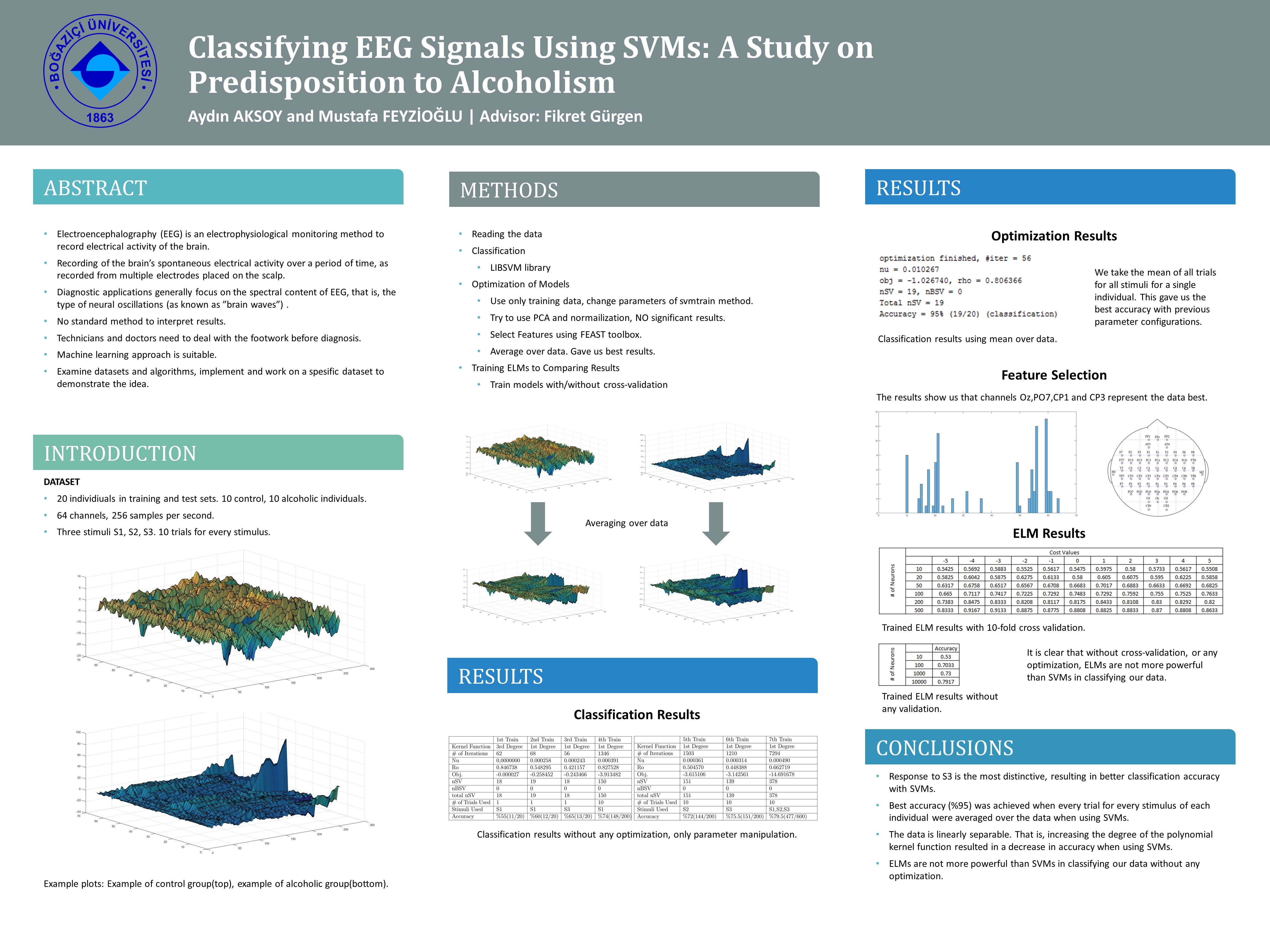Classifying EEG Signals Using SVMs: A Study on Predisposition to Alcoholism
Electroencephalography (EEG) is an electrophysiological monitoring method to record electrical activity of the brain.

Electroencephalography (EEG) is an electrophysiological monitoring method to record electrical activity of the brain. In clinical contexts, EEG refers to the recording of the brain’s spontaneous electrical activity over a period of time, as recorded from multiple electrodes placed on the scalp. Diagnostic applications generally focus on the spectral content of EEG, that is, the type of neural oscillations (as known as “brain waves”) that can be observed in EEG signals. However, many EEG techniques used in research are not standardized sufficiently for clinical use. That is, the results may vary from system to system, thus technicians and doctors need distinct training to interpret these different results. Thus a machine learning approach is very suitable in classifying the EEG data according to the previous findings, eliminating the need for individual training. We examine several other approaches and data sets and work on a dataset consisting of EEG data from alcohol abusers and healthy individuals to demonstrate this idea.